
Бесплатный фрагмент - The future of artificial intelligence in the ski industry
ABOUT THE AUTHOR

KARMEN SOFIYA RIOFRIO SOLNTSEVA is a highly skilled top manager and a known authority on the development of the tourism industry. Her professional career has been marked by the successful completion of multiple projects that use tourism to promote social and economic development.
An expert in the creation and management of ski resorts, the author introduces innovative technologies into the tourism industry and establishes international cooperation in order to strengthen the tourism potential of the regions. She is actively engaged in the analysis and development of strategies aimed at improving the infrastructure of resorts and attracting investments in economic zones, which contributes to the growth and sustainable development of tourist facilities.
This book combines the author’s many years of experience and offers readers a new approach to managing the design and operation of the infrastructure of a ski resort based on advanced artificial intelligence technologies. Based on proven methods and successful strategies applied in different parts of the world, the book is a valuable resource for anyone interested in the development of mountain resorts and their effective management.
AUTHOR’S PREFACE
Dear readers,
Modern technologies are entering our daily lives seamlessly yet firmly. Artificial intelligence is no longer a daring invention of science fiction writers — it is our reality, already here. A self-portrait that a painter of the Middle Ages would spend years creating can now be produced by a schoolchild on a smartphone with a simple swipe of the finger. The invaluable labor of Sophia Tolstaya, who painstakingly rewrote Leo Tolstoy’s great novel four times to correct mistakes and inaccuracies, can today be replicated by a neural network within minutes, carefully refining the text.
Artificial intelligence automates, accelerates, and simplifies many manual processes, processing and analyzing vast amounts of data in a short time, detecting patterns, building forecasts, and generating texts, music, and images. Medicine, technological manufacturing, engineering and design, education, finance, linguistics, agriculture, and transportation — the fields of AI application are extensive and diverse. Beyond its large-scale use in various scenarios, AI technologies have become an indispensable daily, and even minute-by-minute, assistant that enhances quality of life, making it richer and more engaging.
In this book, I would like to share my professional perspective and unique vision of the practical application of AI in the field where I am an expert — the ski industry. I can confidently assess the global potential of neural network technologies at every stage of a ski resort’s life cycle, from infrastructure design and commissioning to guest communication and staff training.
The introduction of artificial intelligence primarily ensures one of the most critical requirements for the operation of a ski resort — guest safety. Potential avalanche zones, rapidly changing weather conditions, snowfall, wind strength and direction, topographical features of trails and slopes, technical malfunctions of lifts — timely information about such factors, obtained through monitoring and forecasting tools, helps prevent potential risks to people, making leisure more predictable and secure. A safe environment attracts more visitors, builds a positive reputation and welcoming atmosphere, promotes the resort, and, of course, increases business revenues.
For visitors of ski resorts, a wide range of opportunities also opens up: from building optimal routes and streamlining logistics chains to receiving personalized recommendations for hotel bookings and equipment selection. Just imagine: an always accurate and courteous AI, ready at any time of day to provide detailed and friendly guidance, offer information, and help solve problems. No more standing in line or waiting on hold for an available operator — most standard customer requests can be easily handled by a digital assistant. Upon checking into a hotel, you will find a room climate tailored to your individual preferences: the desired level of lighting, temperature, and humidity. At the rental point, AI will help you choose the right equipment suited to your body measurements, goals, and skiing level. Beyond financial benefits and personal comfort, you gain the greatest advantage of all — a significant saving of time, the most valuable and irreplaceable resource in our era of extreme speed.
I hope that my book will be useful first and foremost to professionals in the ski industry worldwide, while also sparking interest among enthusiasts of this wonderful winter sport, as well as entrepreneurs, researchers, developers, and the broadest audience across different business sectors. The information is structured and presented in a clear and accessible way.
Enjoy your reading,
Karmen Sofiya
1. Introduction to Artificial Intelligence
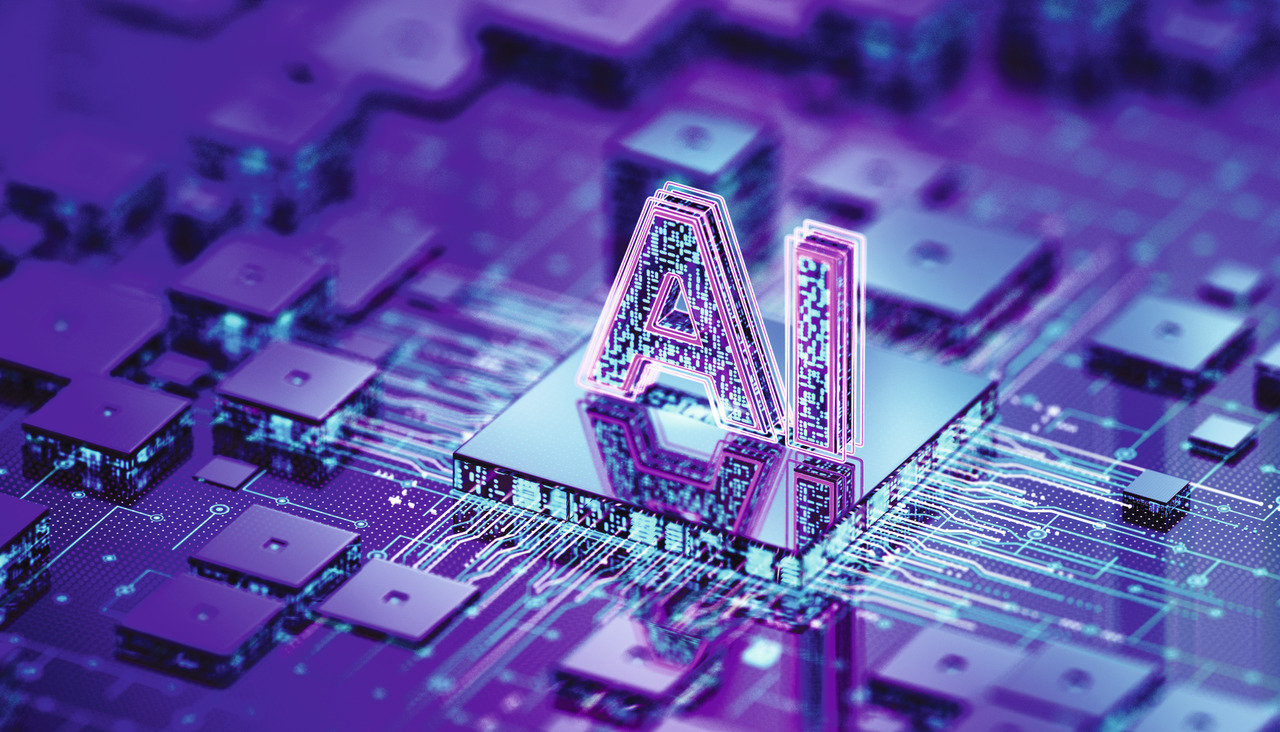
1.1. A Brief History of AI Development
Artificial intelligence (AI) is a computer science field that studies how to empower computer systems with the ability to learn, make decisions, and perform actions characteristic of human thinking. AI lies at the intersection of mathematics, biology, psychology, cybernetics, and linguistics. The main goal of this technology is to understand the nature of the human mind and teach the machine to think.
The history of artificial intelligence began in 1950 with Alan Turing’s publication of a test to check a machine’s ability to exhibit behavior indistinguishable from that of a human. He believed that machines could make decisions based on available information, just as humans do. In 1956, mathematician John McCarthy first used the term “artificial intelligence” at a conference at Dartmouth College dedicated to the “mechanization of intelligence” possibilities. That day became the official date of birth of this field. In 1958, McCarthy developed the LISP programming language, which became a major tool in early AI research.
With the computers becoming more widely accessible in the 1960s, there began the development of the first expert systems and perceptrons, i.e., models simulating the work of neurons. However, the high expectations led to disappointment. In 1969, an article by Marvin Minsky and Seymour Papert showed the limitations of perceptrons, which contributed to the first decline in AI interest, the so-called “winter of artificial intelligence.” In the same decade, Joseph Weizenbaum created ELIZA, the first chatbot that mimics the behavior of a psychotherapist.
In the 1970s and 1980s, funding for AI research declined. The renaissance began owing to the development of new algorithms and the efforts of Japan, which launched an ambitious program to create fifth-generation computers. This provoked the implementation of similar projects in the United States and Great Britain.
During the 1990s and 2000s, as computing capabilities surged, more advanced machine learning algorithms emerged, capable of tackling complex real-world challenges. In 1997, IBM’s Deep Blue supercomputer defeated grandmaster Garry Kasparov in a series of chess games, which became a symbol of AI’s breakthrough in strategic games. In 2002, iRobot introduced the Roomba, the first mass-produced robotic vacuum cleaner using AI elements for navigation.
The 21st century has witnessed an explosion in AI development, fueled by three key factors: the accumulation of big data, particularly from social media and digital platforms, advancements in cloud computing infrastructure, and the creation of innovative neural network designs. In 2011, IBM’s Watson computer won the Jeopardy! television quiz, demonstrating its ability to analyze natural language. In the same year, Apple intoduced Siri, its first mass-scale AI assistant. In 2012, the AlexNet system demonstrated a breakthrough in image recognition at the ImageNet competition, which marked the beginning of the era of deep learning.
The year 2016 saw the global spotlight fall on Sofia, an android granted Saudi Arabian citizenship, capable of facial recognition, engaging in conversations, and displaying a range of emotions.
In 2020, OpenAI released the GPT-3 model, which demonstrated a qualitative leap in text generation. Based on it, the browser version of the ChatGPT AI assistant was launched in November 2022, which gained more than 100 million users in just two months, becoming the fastest-growing consumer application in history. The year 2023 saw the emergence of the GPT-4 model, followed in 2024 by a surge of multimodal AI, a new generation of AI capable of processing text, images, code, and audio.

In addition to advancements in technology, the current phase of AI development is marked by a growing focus on safety, ethics, and regulation. In order to reduce risks and use technology responsibly, international standards and regulatory frameworks are being developed.
1.2. Stages of Artificial Intelligence Operation
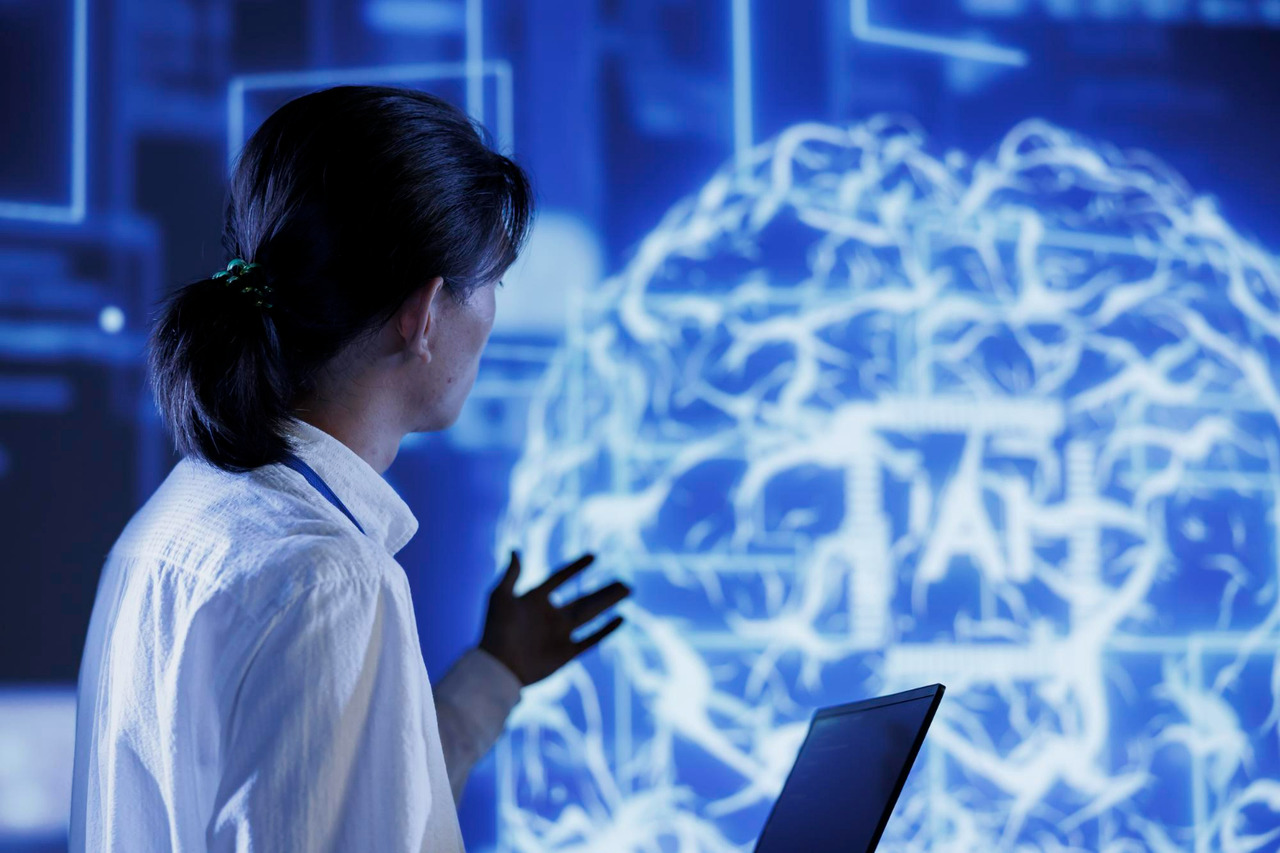
The development and operation of AI systems include several successive stages:
— Data collection. To train an AI model, a significant amount of information is required from various sources, such as open databases, Internet resources, sensors, and other channels.
— Data preparation. The data obtained is cleaned, structured, and converted into a format suitable for subsequent machine learning.
— Model training. The prepared data is used to create algorithms that can recognize patterns, classify information, provide predictions, and perform other cognitive functions.
— Testing and optimization. New, unutilized data is used to test the model’s efficacy. If necessary, algorithms are refined to improve accuracy and stability.
— Real-time application. After successful testing, the model becomes suitable for solving practical tasks, including text analysis, decision-making, event forecasting, and other forms of intelligent information processing.
Example: The ChatGPT model
The ChatGPT large language model’s working principle exemplifies the modern approach of artificial intelligence learning. At the first stage, the model was trained on extensive arrays of texts from various open sources (websites, digital publications, and encyclopedic databases). It was able to learn the language’s grammatical constructions, semantic relationships, and common patterns as a result.
At the next stage, the model underwent additional training (fine-tuning) in specialized tasks, including generating answers to questions, translating text, and summarizing information. This has improved its ability to perform specific functions.
When interacting with users, ChatGPT analyzes the input data, determines the context of the request, and generates the most relevant response based on previously learned language patterns. The results of user interaction are applied to further improve the model within the supervised learning.
1.3. What is Included in Artificial Intelligence
Artificial intelligence is not a single technology but an extensive field that unites many areas, each with its own specialization and scope of application:
— Machine learning. It is a method of data-based training of a model. Instead of giving clear instructions, the model is taught by example, so that it could find patterns on its own. Such models are used in forecasting, text recognition, image analysis, and even in the diagnosing.
— Neural networks. This is a special approach within machine learning. Neural networks are designed by analogy with the human brain: they consist of artificial neurons connected to each other. Such models are particularly good at image recognition, text generation, and voice information tasks. All neural networks are related to AI, but not all AI is based on neural networks. There are other methods.
— Natural Language Processing (NLP). These are technologies that help machines understand, analyze, and generate human speech. It is thanks to NLP that chatbots, voice assistants, automatic translators and search engines work.
— Computer vision. This area of focus allows AI to “see,” i.e., to recognize objects in photographs and videos, analyze images, and measure parameters in images. These technologies are employed in such spheres as manufacturing, autopilots, security systems, and medicine.
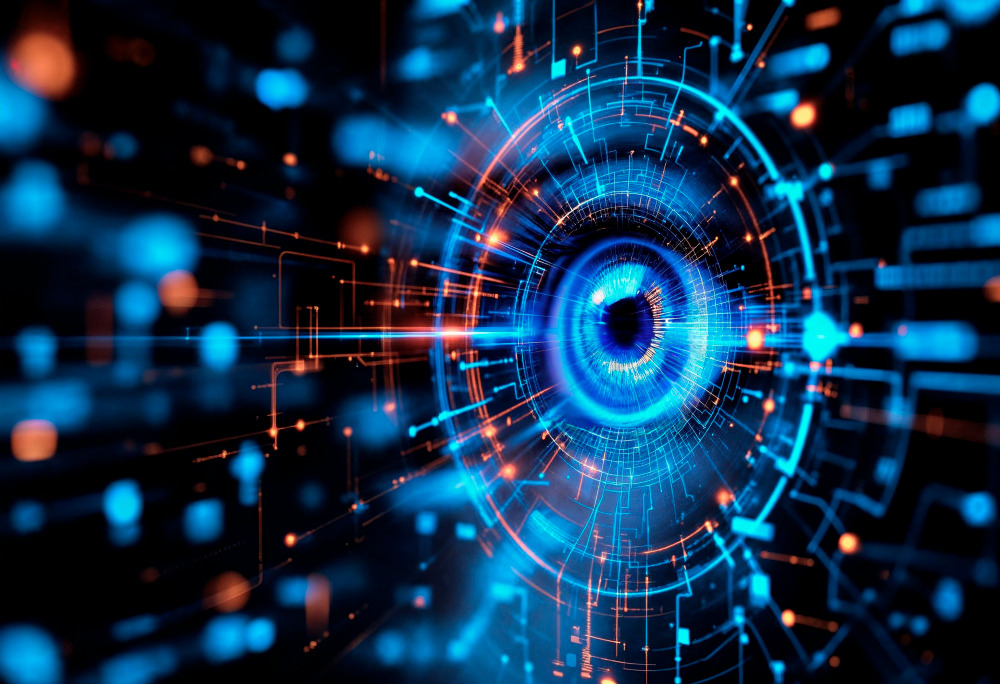
— Robotics. In this area, AI connects with physical devices to create robots that can move, navigate in space, and perform various tasks. Combining AI and mechanics has produced everything from industrial manipulators to robotic vacuum cleaners.
— Recommender systems. They tell you what you might like: movies, products, music, and news. Such systems analyze user behavior and offer personalized content.
Specialists of various profiles work in all these areas. For example, a machine learning engineer is engaged in “teaching” a computer to analyze data, identify patterns, and draw conclusions. Being a scientist isn’t always necessary to accomplish this. These days, a lot of tools make it possible to use AI without extensive programming experience. AI is becoming more and more integrated into daily life; it helps businesses automate procedures, enhances medical diagnosis, provides tailored recommendations, translates text, and even creates paintings and music. All this is the result of the work in many areas within one big concept — artificial intelligence.
1.4. Application Domains for Artificial Intelligence
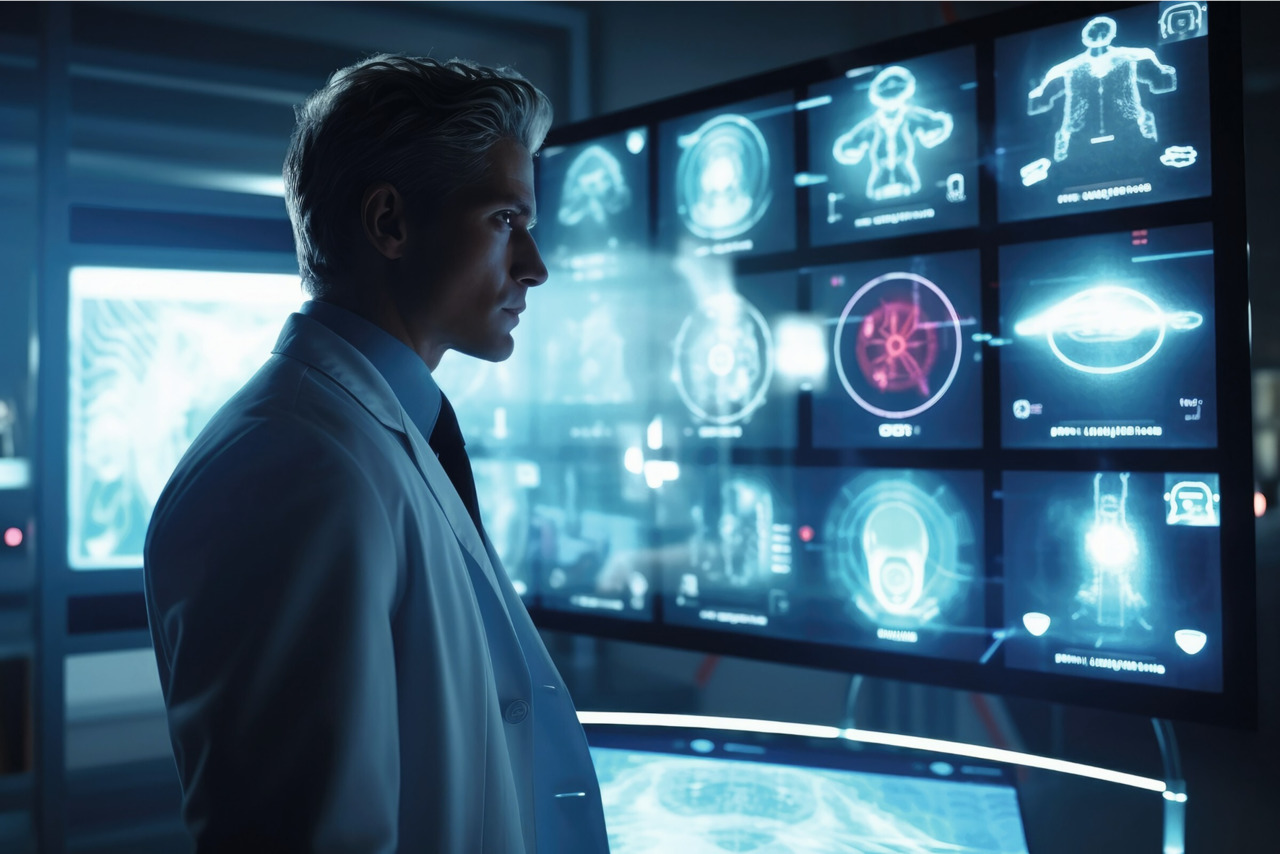
Today, artificial intelligence is used in a wide variety of domains, from medicine to entertainment. AI is already actively helping people in the following areas:
— Medicine. AI analyzes MRI and X-ray images, helps diagnose diseases at an early stage, predicts how treatment will proceed, and even selects individual therapy regimens.
— Finance. Banks and investors use AI to analyze financial flows, forecast market movements, spot suspicious transactions, and automate decision-making processes, like loan issuance.
— Transport. Artificial intelligence is at the heart of self-driving cars. AI also helps to build optimal routes and manage traffic flows in real time.
— Industry. AI is used in manufacturing to predict breakdowns, manage equipment, monitor product quality, and increase process efficiency.
— Agriculture. AI helps manage seeding and irrigation, calculates when it is better to harvest crops, and suggests how to use resources (water, fertilizers, and machinery) more efficiently.
— Education. AI systems can create personalized training programs, track student progress, and even help teachers review assignments and organize the learning process.
— Safety. AI is used for video surveillance, detecting suspicious behavior, analyzing large amounts of data on offenses, and preventing threats.
— Entertainment. In addition to helping platforms choose tailored suggestions for users, artificial intelligence is used in the production of movies, music, games, and other types of content.
— Energy. It can be used to predict electricity demand, manage power grids, and improve energy efficiency, both across the city and for individual buildings.
— Ecology. AI helps to monitor the state of the environment, simulate climate change, and develop strategies to reduce harmful effects on nature.
1.5. AI Geography: Countries Shaping the Future
In the 20th century, artificial intelligence (AI) was mainly an academic field at the nexus of logic, cybernetics, and cognitive psychology. However, in the 21st century, AI has emerged as a major force behind global change. Modern AI technologies, especially generative models, are leaving the laboratory and penetrating into all spheres of life: from medicine and education to the media, defense, and public administration.
The scope of this technological revolution has expanded to include both scholarly and geopolitical dimensions. AI has become a subject of competition between countries, a powerful tool for economic growth, strategic influence, and national security. In an effort to keep pace, every state creates its own policies, making investments in R&D, building infrastructure, enforcing regulations, and attracting talent.
This section provides an overview of ten countries that are currently setting the standard for the development of artificial intelligence, primarily generative AI. Let’s examine their strategic priorities, research and commercial accomplishments, and investment amounts, as well as the unique political and cultural perspectives on artificial intelligence. Let’s start with the leader who sets the trends of technological development for the whole world — the United States of America.
1st place — USA: Global Leader in Generative AI

The United States holds a leading position in the field of artificial intelligence. This is where key technological innovations appear, global trends are formed, and the most advanced models of generative AI are being developed. American companies have created such iconic models as OpenAI’s GPT-4, Anthropic’s Claude, and Google’s Gemini. These developments determine the course of the industry’s growth and set a high standard of quality.
Investments and Financial Support
In the US, private investment in AI is still expanding quickly. More than $33 billion of the $109 billion raised by AI startups in 2024 went toward generative AI technologies, accounting for nearly half of all AI investments made worldwide during that year.
The sector is also supported by the government, which allocated $3.3 billion for infrastructure and research in 2023. The CHIPS and Science Act has increased investments in critical technologies, including AI and semiconductors.
The Ecosystem and the Stakeholders
The American AI ecosystem unites the largest technology corporations (OpenAI, Google, Microsoft, Meta, and Nvidia) and hundreds of fast-growing startups such as Anthropic, Stability AI, and Character.ai. The scientific basis is formed by leading universities, such as Stanford, MIT, UC Berkeley and Harvard. Research laboratories at universities and companies actively cooperate and form the core of the global AI scientific community. According to the Stanford AI Index, in 2023—2024, the United States became the author of 40 of the 51 leading generative models in the world.
Science and Commercialization
Universities focus on fundamental research to develop new neural network architectures, improve learning algorithms, and study ethical aspects.
In response, businesses work to expand innovations and implement them into goods. They are integrating AI in office applications, cloud platforms, search engines, marketing, and media. For example, Microsoft has integrated the GPT model into its Office and Azure products, while Google uses its own language models in the search engine and corporate services.
Policy and Regulation
The United States promotes a strategic approach to AI development. Since 2019, there has been a national strategy aimed at interagency cooperation, education, and innovation development. In 2023, the White House published a Blueprint for an AI Bill of Rights, which outlined the principles of safe and fair use of technology.
State and local governments are putting their own plans into action. For example, New York is implementing the AI Action Plan, while San Francisco is establishing itself as the global hub for AI, offering startups infrastructure and advantages.
International Influence
The United States is actively involved in shaping global standards and regulations. They initiate and support cooperation within the G7, OECD, and GPAI, as well as discuss a unified international code for AI development companies.
At the same time, the country is tightening export regulations on cutting-edge chips, preventing competitors, mostly China, from obtaining them. This approach helps the United States not only maintain technological leadership but also shape the rules of the game on a global level.
A Look into the Future
By 2030, the United States expects to maintain leadership in the field of generative AI. The main drivers are a powerful private sector, high academic potential, and a steady flow of investments. The primary challenges are safeguarding technology, upholding human rights, and preserving competitiveness in a global marketplace that is becoming more and more competitive.
2nd place — China: a Strategic and Ambitious Opponent

Influence and Ambition
In the global hierarchy of artificial intelligence, the People’s Republic of China firmly holds the second position and actively challenges the US for technological supremacy. Beijing sees AI not just as a promising industry but as a strategic foundation for national development. According to the official program published in 2017, by 2030 China plans to become a world leader in AI, surpassing other powers not only in terms of implementation but also in terms of achievements in basic sciences.
Large-Scale Investments
The government relies on centralized investments, stimulating both basic research and commercial technology adoption. Between 2013 and 2024, private investment in Chinese AI reached $119 billion, second only to the United States. The government also provides additional funding. For instance, the National Investment Fund was established with an initial budget of $8.2 billion to support AI, and this is just one such fund. According to IDC’s forecast, by 2027, China’s annual spending on AI implementation will amount to about $38 billion, which confirms the desire for large-scale application of technology in the economy and public administration.
Generative AI: National Analogues
Amid the growing popularity of ChatGPT in the world, China reacted quickly by offering its own analogues. In 2023, Baidu released ERNIE Bot, Tencent released the Hunyuan model, Huawei released the Pangu line, and Alibaba released the Tongyi Qianwen family of language models. These systems are already used in corporate products, digital assistants, and e-commerce services.
Chinese models are showing increasingly high quality. According to the results of international tests, the gap between the best American and Chinese generative systems has narrowed to a minimum, especially in tasks in Chinese. The country is confidently reaching the level of technological self-sufficiency.
Infrastructure and Application Solutions
China is developing AI not only as a high-tech sector but also as a part of everyday life. Today, algorithms are used in millions of applications:
— In the financial sector, AI processes hundreds of millions of transactions per day;
— In healthcare, it helps doctors make diagnoses and plan treatment;
— In education, it supports adaptive learning;
— In industry, it manages “smart” production facilities.
— AI has a distinct role in facial recognition and video surveillance, which raises privacy concerns but gives the government useful tools for control.
Science and Business Interaction
Academic and commercial domains are closely integrated in the Chinese AI development model. The government encourages partnerships between universities and companies, and many researchers also work at corporations such as SenseTime, Megvii, and iFlytek.
This enables the nation to quickly implement the results in products while simultaneously producing a large number of research publications. China already ranks first in the world in terms of the number of research articles and patents related to AI.
Regulation and Control
The development of AI in China is accompanied by clear and strict regulation. In 2023, the authorities introduced the world’s first official rules for generative AI, including mandatory registration of AI services and filtering of unwanted content.
This approach reflects the philosophy of “controlled innovation”: the state strives to use the capabilities of AI while minimizing risks, both political and social. China also takes an active part in international discussions on technology regulation and supports the idea of international coordination in this area.
Geopolitics and Technological Independence
As the technological confrontation with the United States intensifies, China is working to lessen its reliance on foreign parts, particularly American artificial intelligence chips. The government is investing in the growth of its own semiconductor industry and infrastructure for model training. Simultaneously, China is strengthening ties with other countries, developing AI partnerships in Asia, Africa, and Latin America, promoting its own digital platforms abroad, and exporting technologies as part of the Belt and Road Initiative.
Perspective through 2030
By 2030, China expects:
— surpass the United States in total AI infrastructure capacity;
— achieve technological autonomy in key areas;
— turn AI into the foundation of the digital economy.
— China claims to be the second center of power in the AI world, with the potential to become the first due to its centralized management, widespread implementation, and quick development of generative models.
3rd place — Great Britain: European Center for Responsibility, Science, and Ambition

The UK confidently holds the third place in the world in terms of the influence and maturity of the AI ecosystem. Both research and commercial technologies, including generative AI, are actively developing in the country. Leading researchers, multinational companies, and startups are drawn to London and Cambridge, which have developed into innovation hubs.
The UK is the top European country and the third globally (after the US and China) in terms of private investment in AI in recent years. It was also the first country to officially declare its intention to take a leadership position in AI security and ethics, especially in relation to generative models.
Investments and Government Initiatives
The UK actively supports AI at the national strategy level. Adopted in 2021, the UK National AI Strategy program aims to support startups, foster long-term technological development, and increase societal trust in AI. In 2023, the government established the Foundation Model Taskforce, the foundation for advanced AI models, and allocated £100 million for the creation of British language models and AI infrastructure.
Additionally, the authorities invested another £100 million in the expansion of the Alan Turing Institute, the largest AI research center in the country. In order to boost domestic growth and lessen reliance on outside resources, the British government also announced plans to build a national supercomputer and data centers for training large models.
Generative AI and Key Projects
The UK has played an important role in the development of generative AI. DeepMind, a Google subsidiary widely known for its breakthrough projects AlphaGo and AlphaFold, is based in London. It continues to participate in the development of open-access advanced models and algorithms.
The Stability Diffusion project, a London-based Stability AI startup, was established in 2022 and became one of the first democratized image generation models. Thanks to this development, generative algorithms are now freely available to thousands of users worldwide for creative and commercial purposes. The country saw the emergence of a number of new generative AI startups in 2023–2024, with a focus on text, visual, and audio platforms.
Research and Academic Environment
The Alan Turing Institute brings together scientists, engineers, and policymakers researching AI from an interdisciplinary perspective. In addition to fundamental discoveries in machine learning, the center pays special attention to issues of ethics, explainability, and fairness of algorithms. Major universities, including Cambridge and Oxford, are actively cooperating with the industry, and British postgraduate schools remain among the best in the world for training AI specialists. The nation is also making investments in staff training and educational initiatives; over the next several years, more than 1,000 new generative AI specialists are expected to be trained.
Regulation and International Coordination
The UK was one of the first to initiate an international dialog on the regulation of generative AI. The first AI Security Summit in history took place at the renowned Bletchley Park in November 2023, with representatives from 28 countries, including the US, China, and the EU, in attendance. They discussed the risks associated with large language models, including their possible impact on society, the economy, and security.
Prime Minister Rishi Sunak declared during this summit that the UK would act as a coordinator for global AI regulation and the promotion of common standards. The government is also establishing the AI Safety Institute, a specialized body tasked with testing, certifying, and auditing AI models before mass adoption.
Economics and the Startup Environment
The British startup ecosystem is still the most developed in Europe. In terms of the number of AI unicorns, the UK ranks third in the world (after the USA and China), ahead of France, Germany, and Canada. Well-known companies include Stability AI (image generation), Darktrace (cybersecurity with AI), Synthesia (AI-based video), Faculty AI (data analysis for businesses and government agencies).
London remains attractive for venture capital, and the open legal environment and access to English-speaking markets are contributing to the growth of companies focused on the global user.
Forecast through 2030
The UK relies on a combination of innovation, openness, and ethics. The country plans to:
— ensure independence in teaching and implementing large language models;
— create its own cloud and computing infrastructure;
— consolidate the role of a leader in international AI coordination and security.
By 2030, the UK is expected to become a European center for generative AI, focused on humanistic values, a high standard of transparency, and technological sovereignty.
4th place — France: the European Engine of Open and Sovereign AI

France occupies a key position in the European AI ecosystem and seeks to create an alternative to English- and Chinese-centric AI models, focusing on openness, multilingualism, and technological sovereignty. AI is seen by the government as a strategic industry that can guarantee both economic growth and technological independence in vital areas. The French AI development model is based on three pillars: a strong academic base, an actively growing startup sector, and a strict regulatory framework focused on protecting citizens’ rights.
Government Strategy and Investment
President Emmanuel Macron was one of the first European leaders to declare AI a national priority. The AI for Humanity program, which allocated €1.5 billion in investments, was launched in 2018. In 2021, a new phase of the program was launched, with a budget of more than €2.2 billion until 2025, including funding for research, commercialization, and training.
In 2023, the authorities announced the allocation of another €500 million to support “national AI champions,” including startups working with large language models. France is also involved in joint EU investment initiatives, including projects to create European data centers, supercomputers, and cloud platforms.
Generative AI and Technological Advances
In an effort to provide European alternatives for OpenAI or Google products, French researchers and businesses are actively working on generative models. BLOOM, an open language model with 176 billion parameters, is one of the most significant recent projects. It was developed as a component of the BigScience international scientific project in Paris, which was coordinated by Hugging Face. This model has grown to be a landmark achievement, demonstrating that Europe is able to develop competitive, large-scale solutions founded on open-access principles.
The French startup Mistral AI was established in 2023 with the goal of developing independent European Large Language Models (LLM). The company raised over €100 million in its first few months of operation, and its initial models were actively used in public and business applications.
Academic and Startup Ecosystem
France has a powerful AI academic school. Organizations such as INRIA (National Institute for Research in Digital Science and Technology), CNRS (French National Centre for Scientific Research), as well as leading engineering universities (École Polytechnique, ENS Paris, HEC) are actively involved in the development of algorithms, theories, and applied models. The government funds the creation of interdisciplinary AI centers and national AI schools and supports the international mobility of young researchers.
The French startup environment is also thriving. In addition to Mistral and Hugging Face, notable projects include:
— LightOn, that develops optical AI processors and large language models;
— Nabla, that implements generative AI in medical services;
— Owkin, that works with biomedical data and AI for clinical research.
— France is proving that it can be both entrepreneurially flexible and scientifically rigorous.
Regulation and Leadership in Ethics
France is one of the main ideologists of ethical and responsible AI in the international arena. It was the French representatives who led the development of UNESCO’s “Recommendation on the Ethics of Artificial Intelligence,” adopted in 2021. The country actively supports the adoption of the European AI Act, the first comprehensive law on AI regulation, which is expected to go into effect in 2024–2025.
In its domestic policy, France demands that AI products comply with the principles of transparency, fairness, and explainability. These standards are particularly relevant for generative AI, from text and image applications to automated decision-making systems in the public sector.
International Influence
Paris has made a commitment to represent Europe on the international AI agenda. France regularly organizes international conferences (Global Forum on AI for Humanity), promotes the ideas of open scientific collaborations, and actively participates in multilateral alliances, including GPAI (Global AI Partnership), OECD, and UNESCO.
The country is also building bilateral scholarly and technological ties, for example, with Germany, Great Britain, and Canada. France is in favor of building a pan-European computing infrastructure and making models publicly available so that the EU can compete with China and the US, two of the world’s largest technology giants.
Forecast through 2030
By 2030, France intends to:
— consolidate leadership in open and multilingual generative models;
— ensure the EU’s strategic autonomy in AI;
— create a “French-style AI model” that combines technology, humanism, and public trust.
France is developing a reputable and respected alternative to the American and Chinese approaches to AI by fusing a solid scientific foundation, government support, and a strict regulatory approach.
5th place — Germany: Industrial AI and Digital Sovereignty of Europe

With a focus on practical applications for business, logistics, healthcare, and energy, Germany is one of the top nations in the world for AI development. The German strategy blends rigorous engineering, in-depth scientific research, and the goal of securing Europe’s technological independence. The government sees AI as the foundation of the future “Industry 4.0,” a highly automated, flexible, and sustainable manufacturing economy. At the EU and international organization levels, Germany is also actively participating in the creation of ethical and legal standards for AI.
Government Strategy and Financing
In its National AI Strategy, which was adopted in 2018, the German government stated its goal to become a global leader in this area. The initial budget was €3 billion until 2025, but it was subsequently expanded with private investment to reach more than €6 billion. The funding is allocated to research center development, AI professorships (more than 100 positions), interdisciplinary platform development, computing infrastructure expansion, and the integration of AI into small and medium-sized enterprises. Germany is also involved in financing European initiatives, including Gaia-X (the European Cloud Infrastructure Project), EuroHPC supercomputers, and common efforts to create “sovereign” LLMs within the EU.
Generative AI and Key Projects
Although Germany is not as vocal in generative AI as the United States or France, it has already demonstrated potential in this area. One of the key players was the Aleph Alpha, a startup from Heidelberg, which has developed a multilingual large language model, Luminous, capable of competing with GPT-3. A special feature of the project was the attention to explainability and transparency, which are important aspects for a legal and state-oriented environment.
Germany also participated in the international development of Stable Diffusion, with one of the authors of the algorithm, L. Rombach, representing the University of Munich. The model has become the basis of an open-source generative tool that is actively used worldwide. Prominent universities such as the Technical University of Munich and the Max Planck Institute are vigorously developing research in neural networks, diffusion models, and multimodal systems.
Applied implementation and industry
AI is widely used in the industrial and corporate sectors:
— Siemens introduces AI into automation and power management systems;
— Volkswagen and BMW use machine learning algorithms to optimize logistics, quality control, and autopilot development;
— Bosch develops AI solutions for smart manufacturing and the Internet of Things (IoT).
Germany focuses on highly responsible AI systems functioning in the real sector rather than on mass content creation. Reliability, testability, and legal certainty — qualities for which the nation has long been renowned — are essential in the real sector.
Academic Foundation and Personnel
The DFKI, German Research Center for Artificial Intelligence, remains one of the largest and oldest in Europe. In collaboration with academic institutions, it runs extensive programs for specialist education and training. Network cooperation is also actively developing: the government finances innovative AI centers in 12 regions, each of which specializes in a certain industry (medicine, agriculture, transport, etc.). The Digital Hub Initiative program helps connect academia and business, and the KI für KMU program (AI for Small and Medium-sized Businesses) provides entrepreneurs with access to AI technologies through consulting centers and grants.
Regulation and International Influence
Germany is an active participant in the development of the European AI Act, advocating a balanced approach between innovation and the protection of human rights. Particular attention is paid to banning high-risk AI applications, ensuring transparency of algorithms, and access to explicable results. In the international arena, Germany is building partnerships within the EU, participates in the G7 and the OECD, and actively supports sustainable AI standards. The country also seeks to preserve Europe’s technological sovereignty by investing in local data centers, cloud platforms, and training its own models.
Perspective through 2030
By 2030, Germany plans to:
— integrate AI into all key sectors of the economy;
— complete the formation of a national infrastructure for model training;
— establish partnerships within the EU to guarantee a presence in the global race for generative AI.
The country continues to build a European-type AI platform that is rigorous, verifiable, integrated into industry, and meets high standards of human rights protection. Priority is given to quality, control, and long-term sustainability, an approach that is likely to ensure Germany’s stable role in the global AI landscape.
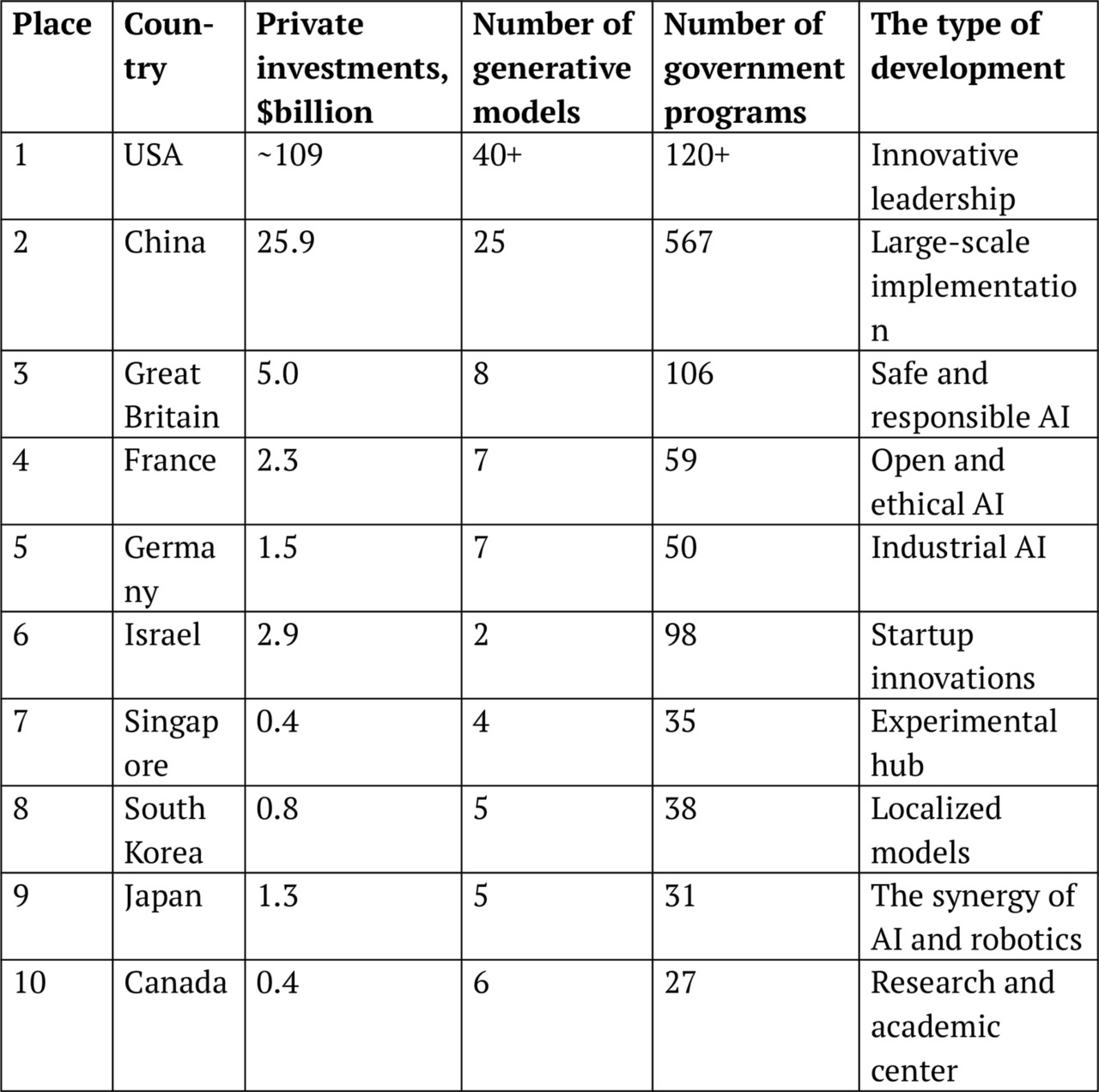
1.6. Global trends and forecast though 2030

The last two years have seen a rapid evolution in AI development, transforming it from a field of technological enthusiasm into a potent instrument of cultural, political, and economic competition. Generative AI has become one of the most dynamic areas of this transformation, and countries that have been able to react quickly to the emergence of new technology are already gaining competitive advantages. Six major trends that influence the course of AI development until 2030 can be found based on the analysis of ten top nations.
— World leadership is distributed between two centers of power. The United States and China continue to set the pace of the race. The United States relies on private investment, a startup ecosystem, and international influence, while China is building a centralized, large-scale implementation system with strong government support. The gap in model quality between the two countries is narrowing, especially in languages other than English. By 2030, they will remain the main technological competitors and ideological opponents in matters of AI regulation.
— Europe is strengthening its position as a center of “responsible AI.” The UK, France, and Germany are building their own development model focused on security, transparency, citizens’ rights, and technological sovereignty. The European AI Act and similar initiatives form the basis for future regulatory legislation. By 2030, Europe can become a global AI ethics reference and exporter of regulatory standards.
— Generative AI goes beyond laboratories. While generative models remained the subject of technological demonstrations in 2022, by 2025 they had already begun to be actively used in education (personalized learning), medicine (diagnostics, image analysis, medical bots), the corporate sector (workflow automation, analytics), and the creative industry (texts, images, music, and videos). By 2030, generative AI will become a massive tool in most industries, like the Internet or smartphones.
— Investments are shifting from hypergrowth to infrastructure. The 2023–2024 investment boom will be followed by a phase of thoughtful scaling. The leading countries are investing not only in models but also in data centers and supercomputers, their own chips and accelerators, localized computing power, AI testing, auditing, and certification systems. An essential phase in the development of AI is the shift from “high-profile launches” to institutionalization.
— Regulation is becoming a global agenda. People realize that the lack of control over AI models creates threats, from fakes and manipulation to errors in decision-making systems. By 2030, a set of international standards is likely to be formed. It will define the risk levels of AI systems, requirements for transparency and explainability, and mechanisms for accountability and tracking. Countries that can offer balanced solutions will gain diplomatic and reputational advantages.
— The next wave is multimodal and universal models. The generative AI of the future is not just about text or an image. Major technological players are already developing multimodal systems capable of understanding and generating language, speech, video, tables, code, and actions. They will form the basis of the next generation of smart assistants — more contextual, personalized, and autonomous. By 2030, they may serve as the foundation for digital platforms as well as autonomous agents in science, business, and daily life.
Conclusion
AI is a new technological axis that is reshaping the global order of the 21st century. Leading countries not only invest and develop but also set the rules by which the digital world will live. Those who shape the framework of generative AI today also shape the future of creativity, thinking, and human-machine interaction in the decades to come.
1.7. The risk of using AI

Along with the obvious advantages, there are certain risks of further use of AI:
— Ethical risks. The bias of developers may be reflected in AI programs and algorithms, resulting in discriminatory or inaccurate decisions. The establishment of ethical standards should receive particular attention in order to prevent a detrimental effect on society.
— Loss of jobs. Certain industries may experience job losses as a result of AI-driven work process automation. This raises questions of social justice and the need to create new employment opportunities for those who lose their jobs due to automation.
— Data security and privacy. There is a greater chance of data security and privacy being compromised as AI advances. Hacker attacks can target systems, and users may suffer severe consequences if large volumes of personal data are accessed without authorization;
— Autonomous systems. The use of autonomous AI-based systems, such as self-driving cars or robots, poses new security challenges. Possible incidents and accidents require the development of strict norms and standards to prevent them.
— Dependence on technology. With the increasing reliance on AI, there is a risk that society will become too dependent on this technology. In case of failures or anomalies in the work of AI, this can lead to a loss of skills and independence and can become a problem.
— Lack of responsibility. The issue of responsibility for AI decision-making remains a complex one. In case of errors or negative consequences, it is difficult to determine who is responsible: the developers, the owners of the system, or the technology itself.
— Social inequality. Social inequality may worsen as a result of the development and application of AI. Those with access to advanced technology will benefit, while others may be left out, which risks widening the gap in society.
— AI’s limited nature. AI’s capabilities and contextual awareness are still constrained, despite its immense power. This can lead to situations where AI systems draw erroneous conclusions due to incomplete information.
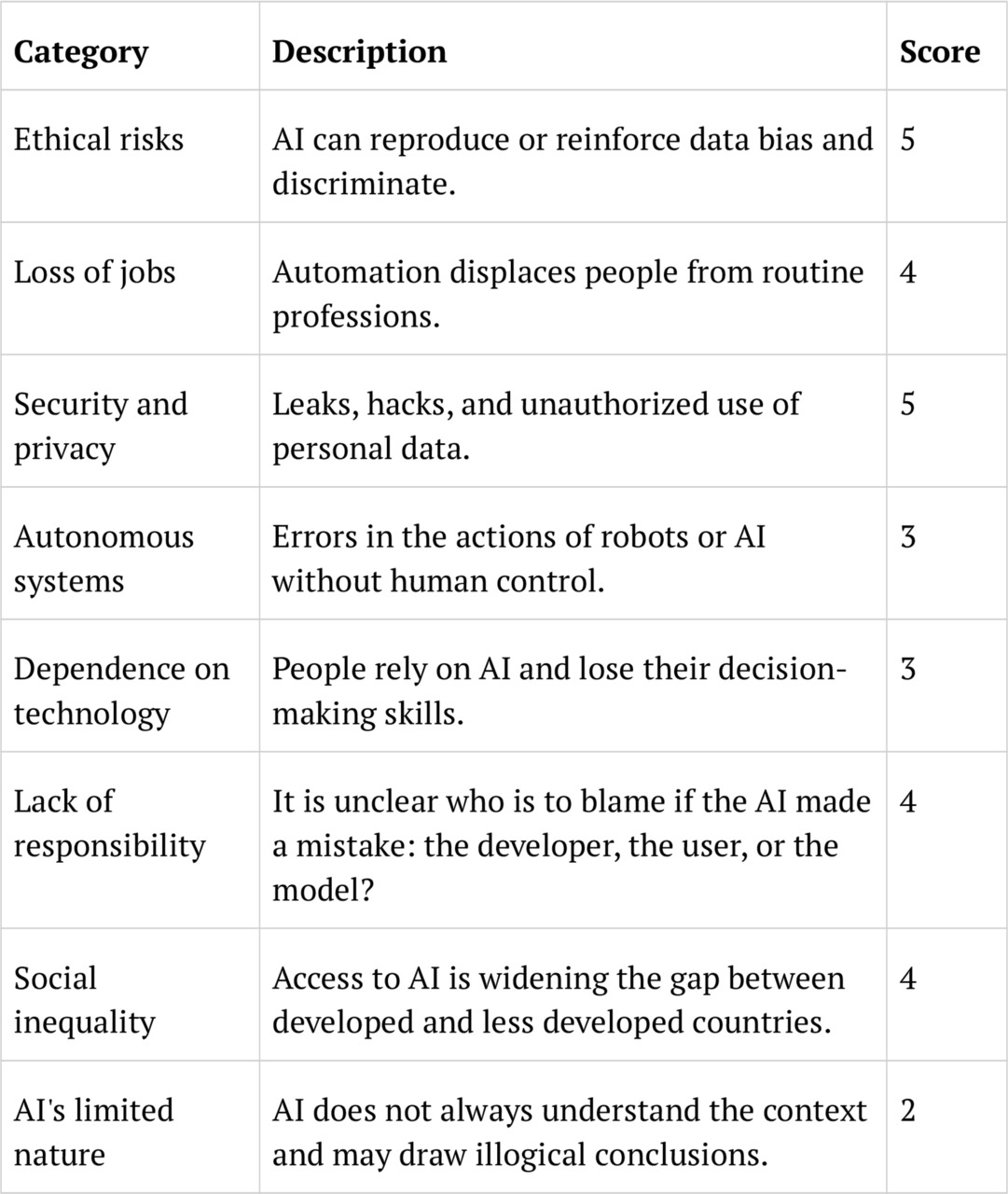
1.8. How to Make AI Safe for Everyone: Key Steps
Intelligent technologies are developing faster than any laws or habits of society. It is vital to consider the rules of the game, not only new AI functions, if it is to become a trustworthy helper rather than a source of danger. Here are the key areas that can help make the development of AI responsible, safe, and humane:
— Come up with clear and fair rules. It is important to agree in advance on how AI can and cannot be used. Ethical standards can help to avoid discrimination, manipulation, and irresponsible use of technology. Instead of being merely formal, these rules ought to be incorporated into the development process from the start.
— Teaching people to understand AI. AI is already working alongside us — in medicine, education, and business. However, it requires new knowledge to be used consciously. Experts who can do more than simply press buttons should be trained; they should know how and why AI makes decisions, as well as its limitations and dangers.
— Protect systems and data from hacking. Complex algorithms present both opportunities and vulnerabilities. Protection against cyberattacks, fraud, and leaks is becoming a necessary part of any AI system. Without this, trust in technology is impossible.
— Create laws that keep up with technolog. The world is changing, and the legal system must keep up. We need clear laws that determine where AI is acceptable and where it is dangerous. This is especially important for systems that make decisions without human involvement: from loans and diagnostics to transport management.
— Support those whose jobs are changing. AI is able to replace many routine professions. But this should not mean that people are left out. Retraining, new forms of employment, and social support programs are all necessary to ensure that the transition to the AI era is fair and not traumatic.
— Making AI transparent and open. The more complex a system is, the more important it is to understand how it works and what its decisions are based on. This applies to both the data and the models themselves. Openness is the path to trust. People should be able to ask questions and get honest answers from the systems that affect their lives.
1.9. The Potential of AI: Steps beyond the Horizon
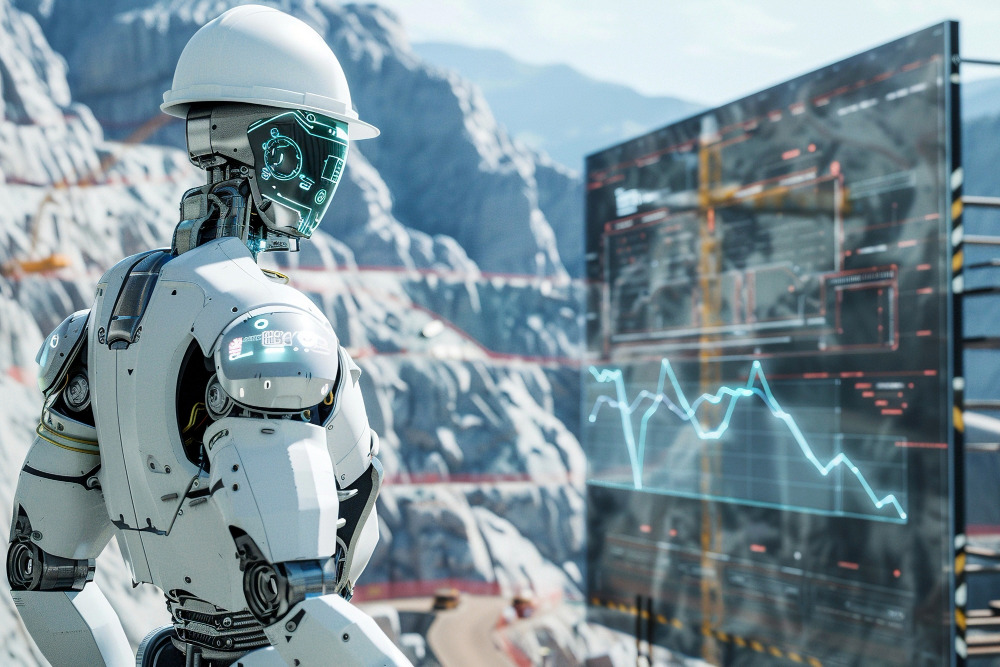
In the coming years, artificial intelligence will be used not only to optimize individual processes or create generative models but also to solve more complex and ambitious tasks:
— Creation of fully autonomous systems: development of technological solutions capable of functioning without human intervention, from autonomous vehicles and drones to industrial complexes and controlled AI infrastructures.
— Development of intelligent robots: creation of machines capable of performing complex actions in an unpredictable environment, interacting with people, interpreting commands, and adapting to new tasks.
— Formation of elements of artificial consciousness: research in the systems that can potentially demonstrate the properties of self-awareness, the ability to reflect and understand their own role in the context.
— Integration of quantum computing into AI: the use of quantum algorithms for data processing and analysis to solve problems inaccessible to classical computing systems, such as modeling complex molecules, real-time optimization, and cryptanalysis.
— Creation of general-purpose artificial intelligence (AGI): development of universal systems capable of learning, adapting, and solving a wide range of tasks at a level comparable to human intelligence. These systems will have the capacity for knowledge transfer across domains, autonomous decision-making, and creativity.
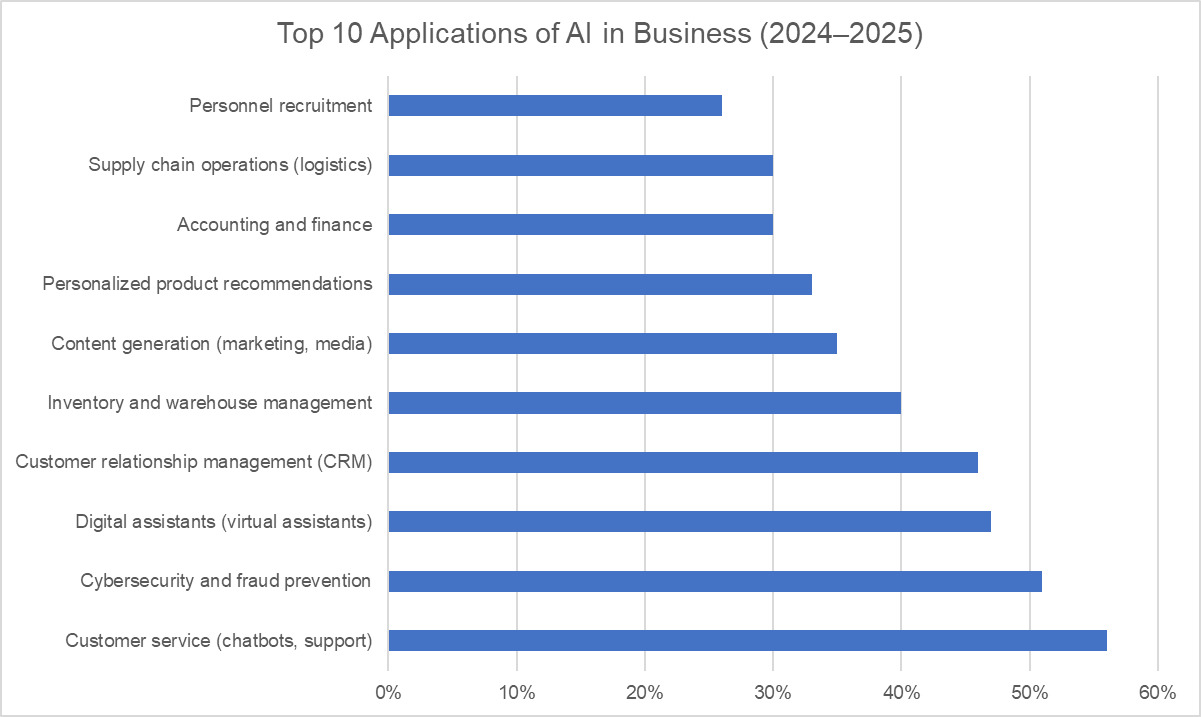
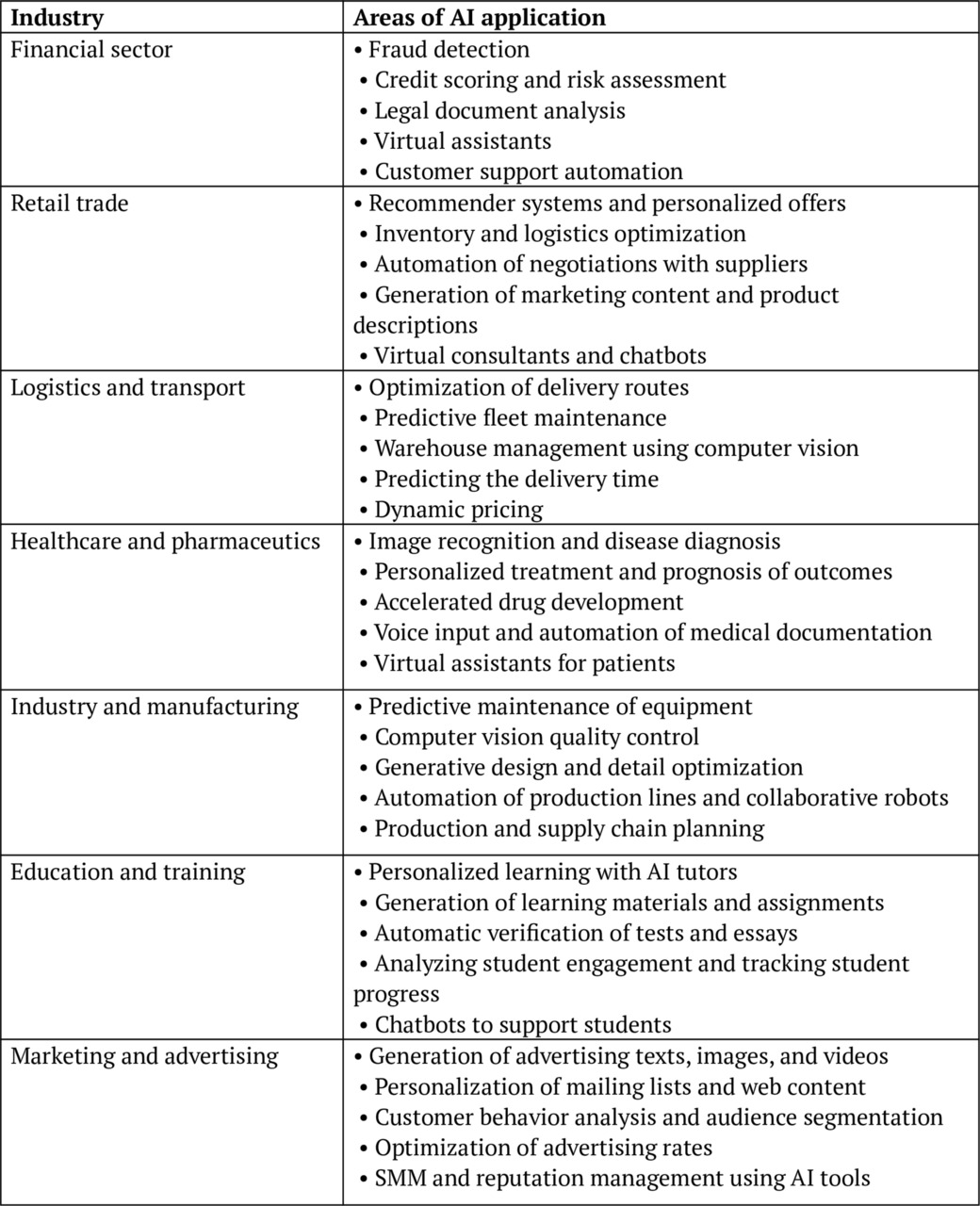
1.10. Artificial Intelligence in Russia: Key Areas and Developments (2025)
AI in Russia is developing in two main directions:
— Mass consumer technologies (voice assistants, multimodal services, computer vision);
— Corporate solutions and generative models focused on process automation, efficiency improvement, and digital transformation.
Voice and multimodal assistants
— Alice (Yandex)
— It is one of the most popular AI assistants in Russia, available on mobile devices, browsers, speakers, and other “smart” gadgets. Since 2024, Alice has been using the YandexGPT model, which is capable of conducting a logical dialogue, generating texts, poems, explanations, and instructions. Supports multimodality: recognizes images, can describe them, and works with voice.
— “Marusya” (VK)
— VK voice assistant is embedded in the ecosystem of RuStore, VK Music, smart speakers, and TV devices. In 2023—2024, it received the support of the generative model from SberDevices and the opportunity to “talk about certain topics,” create fairy tales, jokes, forecasts, and even answer simple legal or everyday questions.
— Salyut and GigaChat (Sber)
— The Salyut assistant works on the basis of GigaChat, a large language model developed by Sber. Since 2023, GigaChat has become the basis both for a household assistant and for corporate applications in call centers, banking, and workflow. The model has been trained on Russian-language sources, adapted to high security requirements, and is already used in Sberbank products for government and business clients.
Specialized AI services for consumers
— Colorize (Yandex), automatic coloring of archived photos and videos using neural networks.
— Voice-over translation service (Yandex), translation, voice-over, and lip-sync using AI.
— Smart camera (Yandex), object recognition, context suggestion, and a visual guide.
Generative AI and Corporate Solutions
— GigaChat (Sber)
The model is tailored to the Russian legal, banking, and management context and shares architectural similarities with GPT-3.5. It is used in call centers (processing requests, generating responses), in workflow (creating drafts of letters and contracts), and in automation of HR and training processes.
— YandexGPT (Yandex)
It is used in the Alice, Search, and Zen products, as well as within corporate solutions for the generation of SEO texts, advertising slogans, short descriptions, and drafts of posts. It is integrated into Yandex’s own tools for B2B clients.
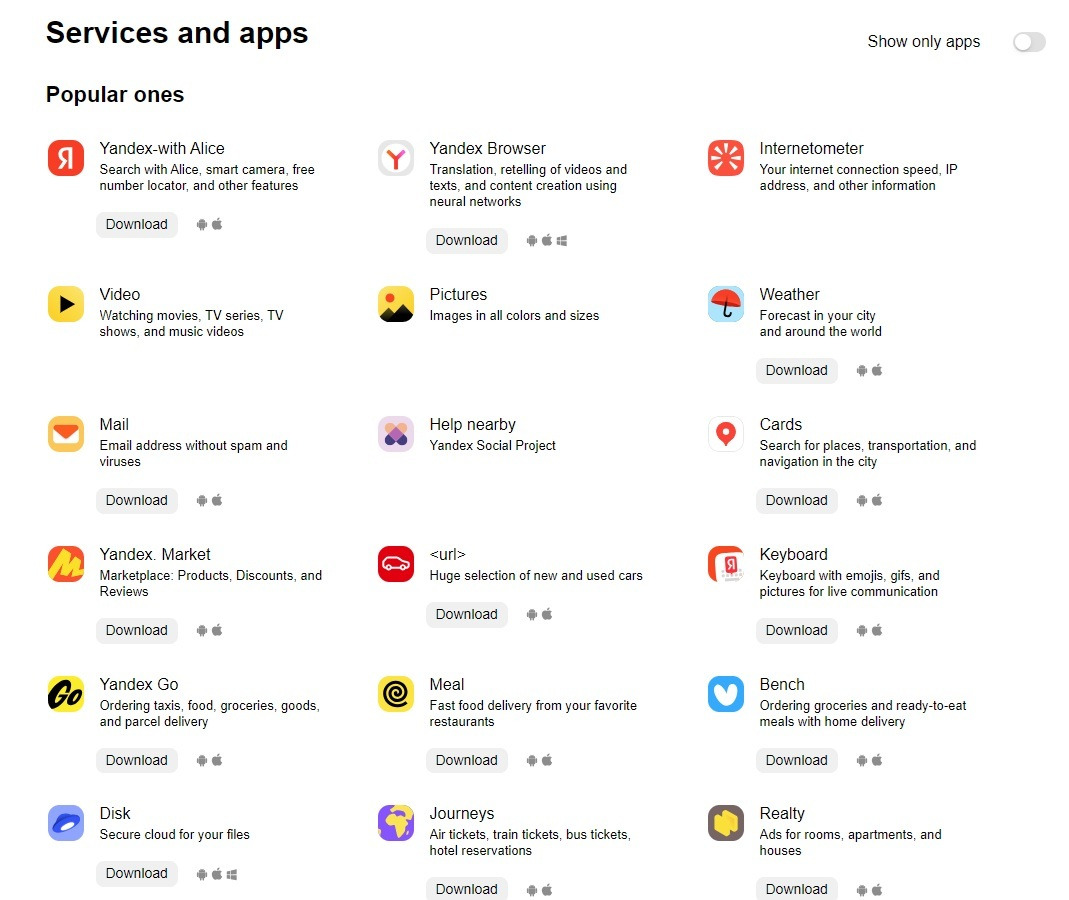
— Just AI
It specializes in developing conversational interfaces for businesses and offers voice assistants for banks and insurance companies, chatbots for electronic commerce and telecom operators, and the JAICP (Just AI Conversational Platform) platform for custom AI-based scenarios.
— VisionLabs (included into Sber)
The leader in computer vision and biometrics. It creates products for object and behavior detection and face and emotion recognition used in banking, retail, and transportation systems.
— VoiceKit and Neuro by T-Bank
T-bank is developing its own voice interaction platform, including voice generation, speech comprehension, and automatic analysis of customer calls. It is used in contact centers, in assessing the quality of communication with operators, and in speech analytics.
The general trend
In 2025, Russian companies are focused on:
— development of domestic generative models independent of foreign platforms;
— application of AI in customer service, financial sector, e-commerce, education, and security;
— promoting ethical and sovereign solutions that comply with Russian law and digital infrastructure.
Conclusion
Artificial intelligence is now a practical tool that is being used in many areas of life, not just a futuristic technology. We observe how AI is transforming medicine, industry, education, logistics, culture, and even public administration. Leading nations use generative models, create their own ecosystems, talk about hazards and regulations, and push the limits of what is feasible on a daily basis.
The ski industry is a particular industry with significant seasonality, intricate logistics, and strict safety regulations. Now is the time to examine how AI may impact this sector. The second chapter will examine the tasks that AI can perform in ski resorts, such as operating cable cars, anticipating avalanche dangers, and providing on-site visitor guidance.
2. Areas of AI Application in the Ski Industry
Бесплатный фрагмент закончился.
Купите книгу, чтобы продолжить чтение.
